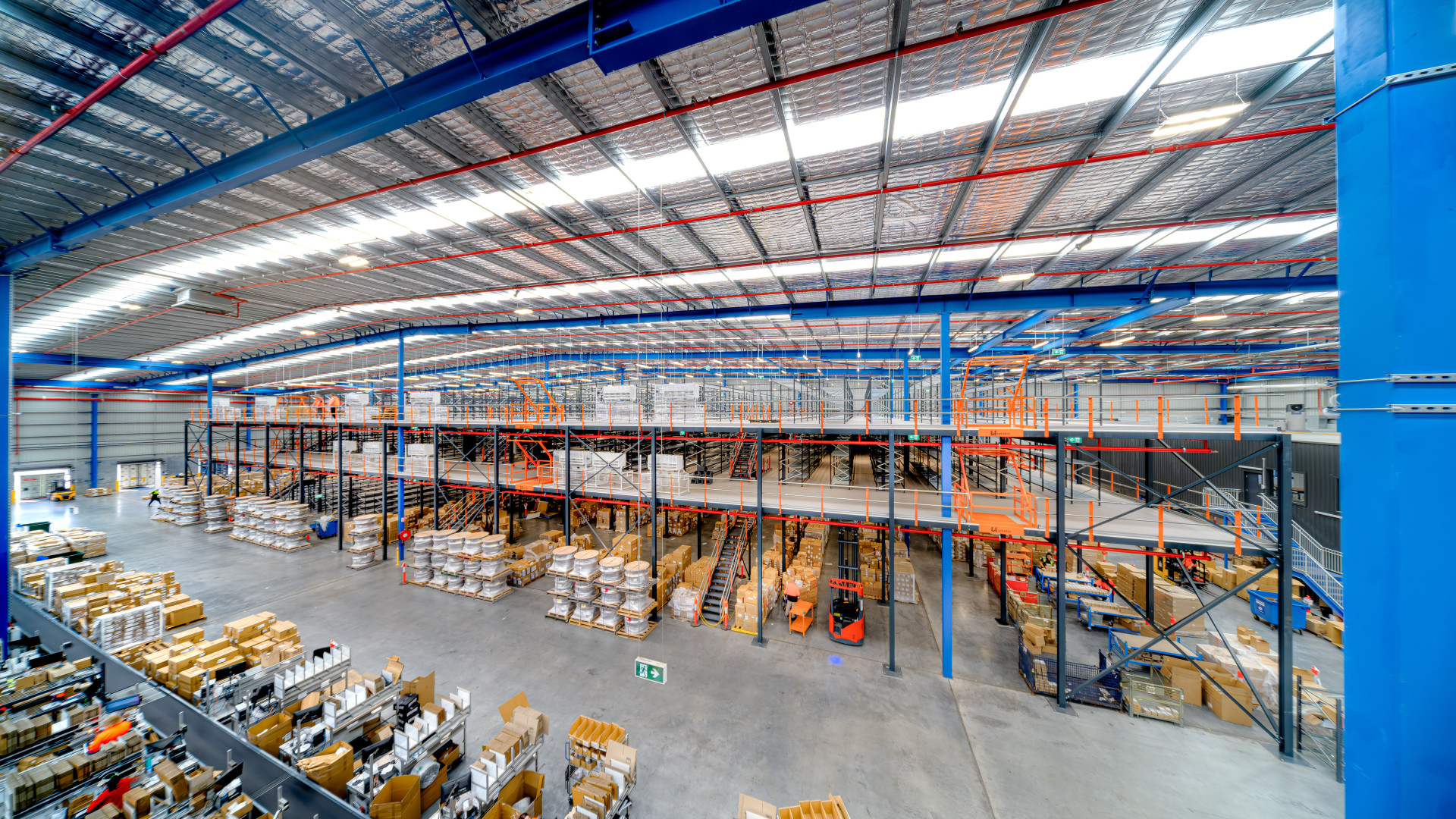If you have ever tried to make three good ideas work together without a plan, you’ll know it’s like trying to run a relay race with no baton handover. Each runner might be strong on their own, but if they’re not in sync? The team doesn’t stick the landing. The same goes for your warehouse.
Applying the lens of modern high-speed fulfilment, warehouse solutions can no longer be planned in isolation. Fit-outs, storage systems and sortation technologies must work as one cohesive unit; aligned, scalable and purpose-built. When they do, the result is a warehouse that runs smoother, ships faster and grows with you.
This article unpacks why integrated warehouse systems no longer fall in the ‘nice-to-have’ bucket, but are in fact a core strategy for ROI. If you’re overseeing a facility upgrade or greenfield build, here’s why integration is your biggest asset.
The Cost of Siloed Warehouse Systems
When fit-outs, storage and sortation operate independently, problems don’t just add up, they multiply. In a typical warehouse, poor integration can increase picking times by up to 30%, bump up error rates, and stall automation investments before they pay off. Fixing these issues later is always more expensive than planning around them from the start.
-
Mismatched layouts mean staff walk further than they should between picking, packing and staging zones.
-
Storage that doesn’t align with product velocity leads to slow-moving stock hogging prime space.
-
Sortation systems bolted on as an afterthought create awkward choke points and return loops.
The upshot of all of this? Higher labour costs, longer order cycles and underutilised floor space.
Component 1: Strategic Warehouse Fit-Outs
A high-performing warehouse starts with a fit-out designed to support flow. This means more than just bolting racking to concrete - it’s about shaping the entire space around your operation’s heartbeat.
Key fit-out considerations include:
-
Zoning for safety and function - Clear paths between goods-in, sortation and despatch.
-
Infrastructure for automation - Including reinforced flooring, power feeds and future conveyor allowances.
-
Vertical utilisation - Mezzanines and walkways to separate people from machinery or extend usable area.
The best fit-outs are built for change. Whether you're scaling SKUs, adding AMRs, or reworking your picking method, a smart layout will support future needs without expensive reworks.

Component 2: Efficient Storage Solutions
From selective racking and carton live storage to high-density ASRS and shuttle systems, your warehouse storage choices need to reflect how fast your inventory moves and how often it’s accessed.
Here are the two golden rules:
- Map your inventory velocity. Fast movers should sit closest to sortation and dispatch zones. Slow movers? They can live higher or further out.
- Match storage to the floorplan. Use vertical space wherever possible, especially in facilities located in areas where real estate is at a premium.
Well-aligned storage reduces picker travel time, limits double-handling and increases both safety and throughput. Better still, when designed to support sortation and automation, storage systems can improve ROI per square metre by up to 40%.
Component 3: Smart Sortation Systems
Here’s where the magic happens. Sortation systems are the bridge between storage and fulfilment. They make sure the right item goes to the right place at the right time. This can cover a packing bench, dispatch lane or returns chute.
A well-integrated sortation system should include:
-
Conveyor paths that reduce cross-traffic and eliminate dead ends
-
Lane logic aligned with SKUs, customer zones or carrier groups
-
Touchpoints for scanning and QA that don’t disrupt flow
Sortation technology (pop-up wheels, tilt trays or cross-belt systems) should complement your layout, not compete with it. When designed in tandem with fit-outs and storage, sortation enables rapid fulfilment with minimal human intervention. Think of it as the logistical glue that holds an integrated warehouse together.

Unlocking ROI through Integrated Design
Bringing fit-out, storage and sortation together as one integrated warehouse system is a commercially smart choice for a number of reasons.
What does integration unlock?
-
Reduced labour costs - thanks to fewer touchpoints and shorter travel paths
-
Improved accuracy - from consistent data handovers and better visibility
-
Higher throughput - as layout and equipment work in unison
-
More storage capacity - through efficient space planning and vertical build
-
Future-proofing - with modular components ready for tech upgrades
And perhaps the most important benefit? Faster speed to ROI. Warehouses with integrated systems reach performance benchmarks months ahead of those designed in silos.
Why Unistor is the Partner of Choice for Warehouse Integration
At Unistor, we understand that warehouse optimisation isn’t just about picking equipment - it’s about knowing how the pieces fit together for optimum performance. We offer:
-
End-to-end layout planning, from concept to handover
-
In-house engineering for mezzanine solutions and platform design
-
Collaboration with leading automation vendors, ensuring system compatibility
-
Local project management that’s responsive and grounded in Australian standards
More than a supplier, we’re your integration partner - here to ensure your warehouse delivers now and evolves for what’s next.

Final Thoughts: Build Smart, Perform Better
When it comes to designing a high-performing warehouse, integration is the name of the game. A smart warehouse solution brings together strategic fit-outs, purpose-built storage, and efficient sortation - not as mutually exclusive projects, but as one interconnected ecosystem.
This cohesion reduces costs, boosts performance and gives your facility the agility to respond to whatever the market throws at it.
Ready to integrate your way to better ROI? Talk to the team at Unistor about a custom warehouse integration strategy tailored to your site, your volumes and your goals.



